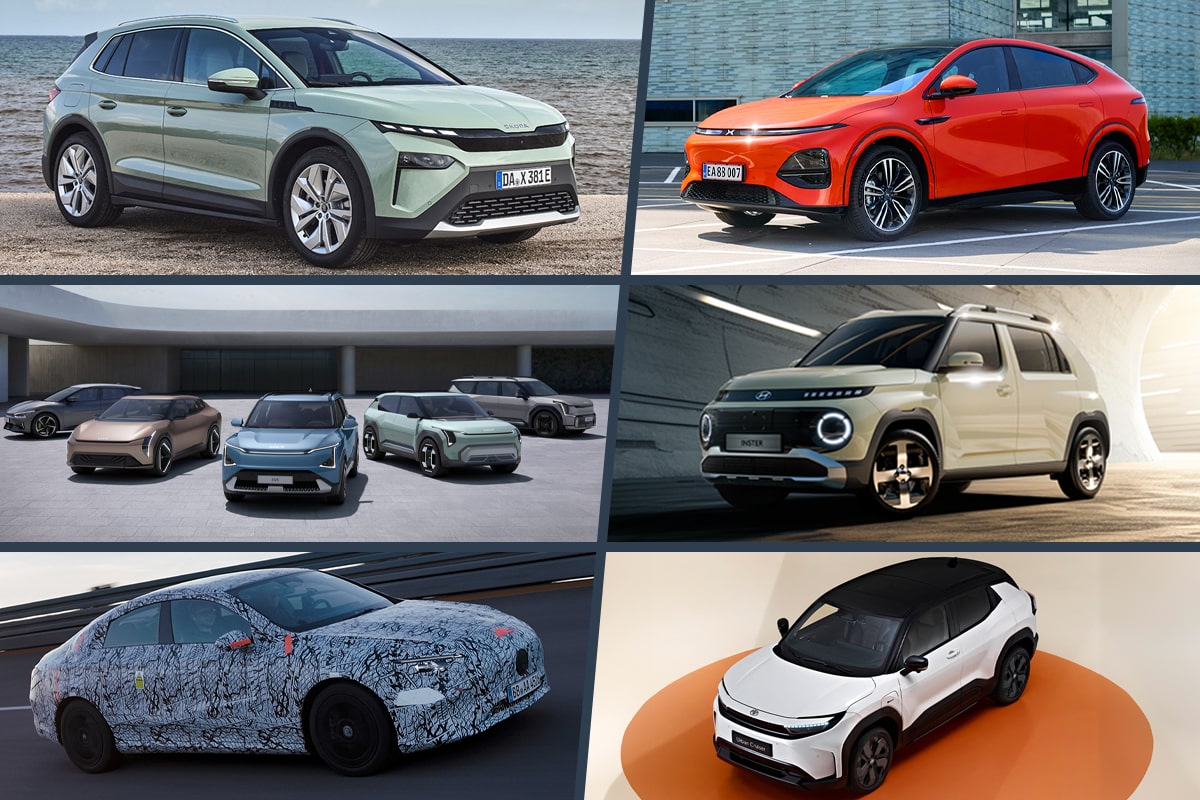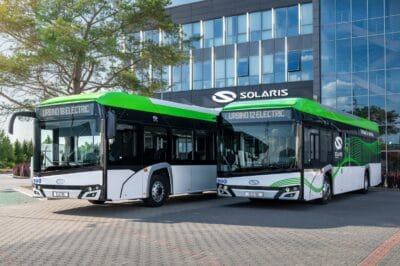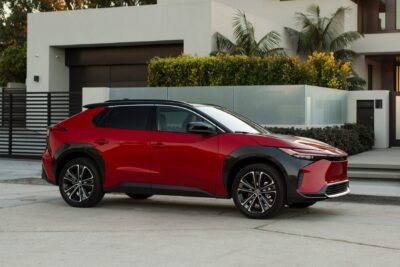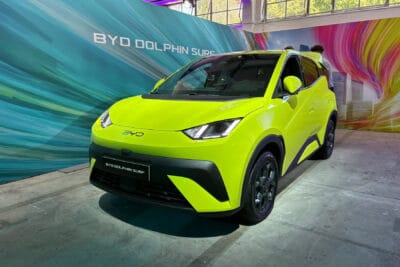
Our Look Ahead: These electric cars are coming in 2025
Approximately €75 per kilowatt-hour for NMC cells. And around €45 for LFP cells. According to Professor Dirk Uwe Sauer of RWTH Aachen, speaking on the German “Geladen – The Battery Podcast,” the market has shifted dramatically in the past one to two years: from scarcity, where producers set prices, to surplus. Battery system costs are plummeting. Economies of scale in mass production benefit the automotive industry and, with some delay, consumers. The result: electric cars offer greater ranges, and by 2025, there will be a significantly improved selection in the €20,000, €30,000, and €40,000 segments.
Regardless of global market prices, political measures indirectly demand more electric vehicles. European CO2 fleet limits are tightening by 15 per cent. For automakers, selling more electric vehicles is the most cost-effective way to meet these targets. The industry is well-prepared. They know that by 2030, a 55 per cent reduction compared to 2021–2024 levels will be required. Only a steady ramp-up with attractive products will suffice to meet these regulations.
Other markets are even stricter: In the United Kingdom, 80 per cent of new cars must be electric by 2030. And in Norway, internal combustion engine vehicles are now practically unsellable.
It is noteworthy who set these CO2 reduction targets into law. In the European Union, it was conservative majorities in Parliament and the Council, including votes from Germany. In the UK, it was the conservative Prime Minister Rishi Sunak of the Tories.
So, do not be misled by German politicians trying to win votes in the upcoming elections by promising rollbacks. It will not happen. The shift is unstoppable. The market is handling it already.
At electrive, we now have to focus on the highlights among new releases. There are so many that we are skipping some announcements and niche models.
The most important models at a glance
BMW introduces the Neue Klasse. First comes the iX3 (NA05), followed by the electric 3 Series BMW, which could be called the i3 (NA0). With the Neue Klasse, BMW transitions the traction battery voltage from 400 to 800 volts. Oliver Zipse, the CEO, repeatedly emphasises BMW’s multi-powertrain strategy in public – a transparent tactic to avoid alienating potential buyers. In reality, BMW is fully committed to electric vehicles.
Mercedes is finally launching its 800-volt platform. The first electric car based on the Mercedes Modular Architecture (MMA) will be the CLA. Beauty is subjective, but the 2023 concept study looked genuinely impressive. The MMA developers, however, prioritise maximum efficiency: a Mercedes should be economical and capable of long ranges.
Interestingly, the CLA’s entry-level version features cost-effective and robust LFP cells. And even more notably, it uses NMC cells with silicon additives in the graphite anode for longer ranges. So far, this has only been seen in the Porsche Taycan and the Audi e-tron GT. The charging performance of such a CLA could be outstanding. It remains uncertain whether Mercedes will also unveil the electric GLC later this year. The SUV is one of the brand’s most significant models globally.
The production version of the Smart #5 will debut under the joint venture with Geely. This SUV departs entirely from the brand’s original compact focus. Instead, the #5 impresses with an 800-volt system, which is not included in all versions. Entry-level models retain a 400-volt system with lower charging power.
Volkswagen’s struggles – which, according to CEO Oliver Blume, concerns not only the core brand but the entire group – are not due to the electric car itself. On the contrary, Volkswagen could benefit from moving faster: finally, deliveries are starting on the Premium Platform Electric (PPE). The Audi A6 and Q6 e-tron (read our review), as well as the Porsche Macan (read our review), should have been on the roads long ago.
There is also a delay with electric cars based on the MEB Small (Modular Electrification Toolkit). The Volkswagen ID.2, Cupra Raval, and Skoda Epiq should be unveiled in 2025. However, customers likely won’t receive these vehicles until 2026.
At present, however, one EV stands out: the Skoda Elroq impresses with a very attractive price-performance ratio. Unlike the Volkswagen ID.3, it offers towing and roof load capacities.
When mentioning the Elroq and ID.3, one must also mention the EV3: Kia is launching a product offensive with the latter. It replaces the Soul EV and the Niro EV. A bold move is the traction battery, which optionally provides 81.4 kWh for a range of 605 kilometres. Following the EV3 are the EV4 in fastback and estate forms and the compact SUV EV5. The smaller EV2 will not appear until next year (at the earliest).
At Hyundai, the Inster needs to deliver strong sales. The small SUV, with proportions similar to a Suzuki Ignis—narrow and tall—could become a cult car. The Inster features foldable front seats, providing space for sleeping, which has already excited the car camper community. The EV is also a counter-argument to claims that there are no electric small cars. And for those not satisfied, there’s the massive Ioniq 9. In contrast, the counterpart to the Kia EV3, the Hyundai Ioniq 3, will not arrive until 2026 at the earliest.
At Stellantis, as with Volkswagen, there have been excessively long delays. We still await the affordable electric cars Citroën ë-C3 (read our review) and ë-C3 Aircross. Reportedly, there are software issues. On the same platform, the Fiat Grande Panda will follow. Stellantis’ updated small platform, named STLA Small, will debut in 2026, while larger vehicles using the STLA Medium platform, such as the Opel Grandland Electric and the Peugeot e-5008, are close to market launch. Among others, the DS No.8 saloon will have its premiere.
It is plausible to speculate that Stellantis and Renault are deferring the registration of electric cars to the new year to more easily meet CO₂ regulations. Following the dynamic R5, Renault will introduce the versatile R4. The EV features a foldable passenger seat and, unlike the R5, can transport items on the roof and tow trailers. The third retro-styled electric car will be the Twingo. The production will be unveiled version late in the year.
For the sportscar division Alpine, the standalone four-door coupe A390 will follow the A290, derived from the R5. Only Dacia, part of the Renault group, offers no updates.
Meanwhile, the Tesla community is waiting for the revamped Model Y, codenamed Juniper. No one expects a revolution. However, similar to the Model 3 Highland, significant improvements in noise insulation and suspension tuning are likely. Juniper will also eliminate the levers for indicators and gear selection. And although Elon Musk has promised it multiple times, approval for the FSD Supervised assistance system, akin to the US model, will take more time.
One of Tesla’s most notable international competitors is BYD. Due to overconfident pricing and software flaws, its sales success in Europe has been limited, despite an increasing number of models, such as the recently unveiled Sealion 7. Expectations that Chinese manufacturers would offer particularly affordable electric cars have so far been unmet. Perhaps this will change with the Atto 2, sold as Yuan Up in China.
In terms of dimensions, the BYD Atto 2 is similar to the Kia EV3 but significantly taller at 1.68 metres. Many are also eagerly awaiting the compact Seagull, also known as the Dolphin Mini. To date, there is no official launch date for the Seagull – a disappointment.
Overall, the Chinese automotive industry is undergoing a phase of consolidation both in its domestic market and in Europe. Some players will grow even stronger than they already are, which also applies to suppliers like CATL, the largest battery producer globally. Others will disappear, while a third group will form strategic partnerships—for instance, Volkswagen’s investment in Xpeng, which could benefit both sides.
Toyota remains a failure. The Urban SUV, presented as a concept study in 2023, was recently introduced as a rebadged Suzuki e-Vitara. The variant with the Toyota logo is to be sold in Europe starting this summer, but prices are not yet known.
The lacklustre approach with which the global market leader handles its electric cars is striking. Minimum standards, such as automatic or manual preconditioning, are absent in the bZ4X, even though Toyota, with over 20 million hybrid cars sold, knows very well how to manage cells. This strategy is hardly comprehensible since, in critical markets like China, growth without electric cars is impossible.




0 Comments